The 2018/19 campaign was one to forget for Real Madrid. With a La Liga title race almost over by October and humiliation bringing their European dominance to an end, sights have been set on this campaign by most even before Christmas.
Embarking on a new season in 2019/20, there were plenty of reasons for optimism. The club acted quickly to swoop for long-term target Eden Hazard, a much-needed centre-forward in Luka Jovic, defensive reinforcements in Ferland Mendy and Eder Militao and even promising youngsters Rodrygo Goes and Takefusa Kubo, all arriving before pre-season training even began.
Zinedine Zidane’s return had not been simple, experimenting with a number of tactical formations and set-ups at the tail end of 2018/19 which meant that many held off making judgements until this summer. A disastrous pre-season has included defeats to Atletico Madrid, Bayern Munich and Tottenham, a penalty shoot-out win over Arsenal and another uncomfortable victory over Fenerbahce. In the process, 16 goals have been conceded compared to 11 goals scored.
This scout report will provide tactical analysis of Real Madrid with a tactical preview of the 2019/20 campaign. This analysis considers the tactics deployed by Zidane as his team look to improve on their third-placed finish in 2018/19.
Formation
It remains to be seen how Zidane will set up his Real Madrid team. In the past, the preference in terms of tactics has always been a traditional 4-3-3 which brought three consecutive Champions League titles. However, signings and pre-season fixtures appear to suggest that Zidane may be prepared to mix things up.
4-3-3
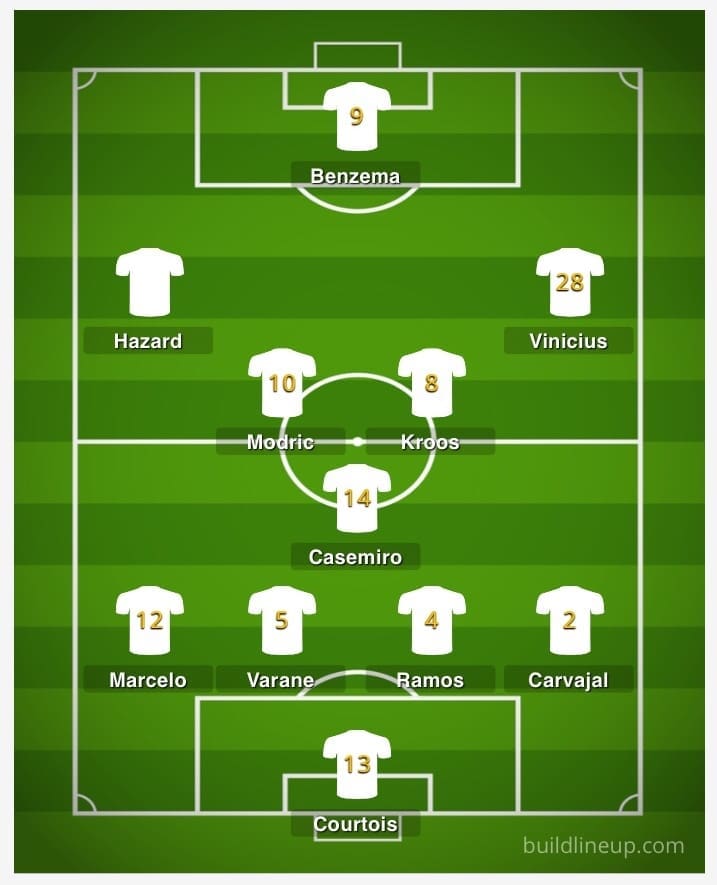
The undisputed default, this season marks the first time that there have been doubts about the 4-3-3 shape. The attacking trident of BBC is well and truly over and it now looks as though it may be Hazard and Vinicius to step in.
In pre-season, it has also dominated, though that is thanks in part to an injury to Jovic and Zidane’s reluctance to field Mariano Diaz up until he found the net against Fenerbahce. Towards the tail end of last season, it became less and less used as the French coach considered his options.
The strategy remains the same as it did throughout Zidane’s first spell at the club, only with Hazard the left offering much less width than past options, instead preferring to cut inside. As such, it may accommodate a more offensive full-back like Marcelo on the overlap but does leave the defence vulnerable should he be caught out of position.
4-4-2
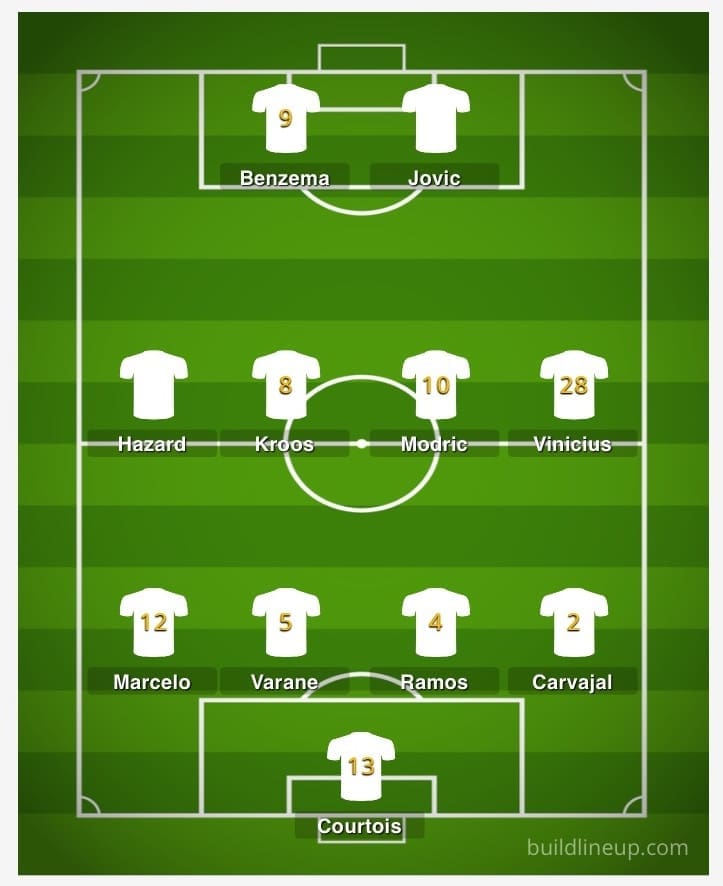
The 4-4-2 is partially designed to protect the Madrid backline. In this set-up, perhaps the one where Vinicius’ position on the right is most up for grabs, Hazard has occupied more of a free role, floating in behind the front two as more of a playmaker or deep-lying forward.
This allows a more conservative midfield three to form in the offensive phase, with the right midfielder drifting in and allowing Luka Modric or Toni Kroos, usually the latter, to drop into the anchor role of the 4-3-3 shape. However, without Casemiro involved, this formation has not provided the defensive stability hoped for in its outings in pre-season.
The partnership between Karim Benzema and Jović is also yet to be tested in-depth, lasting just 16 minutes before a knock forced the Serbian to the sidelines against Arsenal. Should both find form, this may be the only way in which Zidane can shoehorn both players into the starting line-up.
4-1-4-1
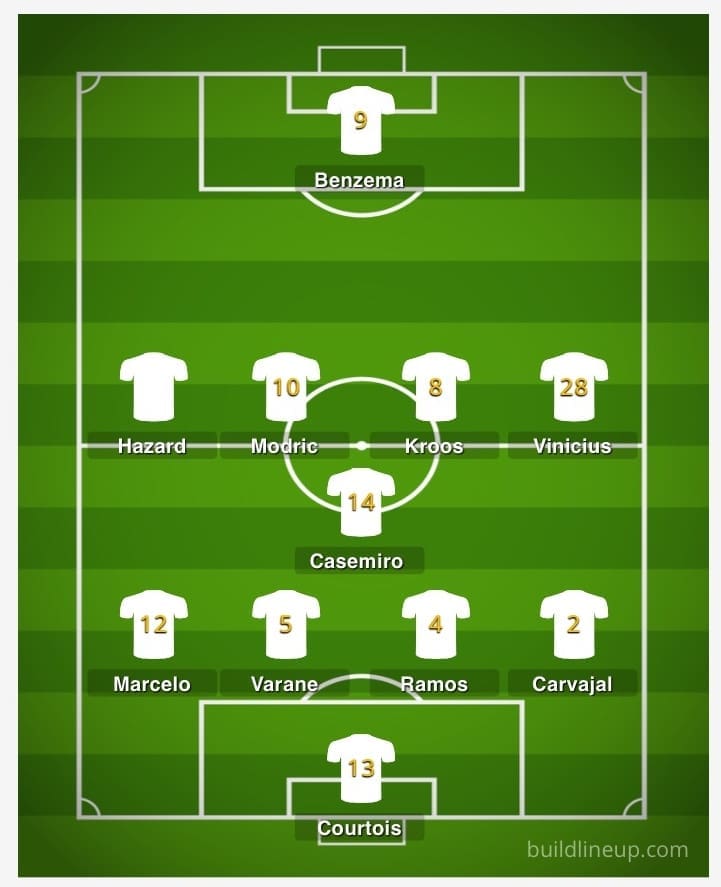
The most defensive approach deployed has been a 4-1-4-1 which provides many similarities to the 4-3-3, only with more disciplined wide men. Again here, Vinicius may be sacrificed for the likes of Lucas Vazquez, James Rodriguez or Isco who could provide more solidity to the midfield three.
In the defensive phase of this style, Casemiro effectively drops into the backline and creates a five-man defence. With Eder Militao arriving, it’s something we’ve expected to see more of from Zidane in his experimentation but it has never come to fruition. It is clear that if he is to build up his defence to provide freedom to his full-backs, it will come by packing the midfield and allowing Casemiro to drop.
Goalkeeping disputes
A topic which looked to be settled earlier this summer, the debate over who is Real Madrid’s number one persists. Days after Thibaut Courtois proclaimed that he was undisputed number one, an ankle injury sidelined him and allowed Keylor Navas to produce a man of the match display against Tottenham.
Zidane has resisted selling the Costa Rican all summer, even shipping out his son Luca Zidane on loan to make room for Navas to stay. Yet, what’s clear, is that the rotation of goalkeepers last season was fundamental in the disjointed defensive shape.
Navas boasts substantial playing time with the defence which has changed little over the past few years, and many pointed to Courtois’ introduction as unsettling the likes of Raphael Varane and Sergio Ramos. Courtois will need to be on his toes with his movement to fill the gaps that they vacate to establish himself.
Overly adventurous full-backs
Last season, one of Real Madrid’s weaknesses laid in the use of full-backs and that has again continued in the pre-season campaign. Time and time again, spaces can be found in behind attacking wide defenders who are caught out on the counter.
This issue is particularly evident when Casemiro is absent. The holding midfielder will often provide cover for a full-back by dropping into the backline as almost a third central defender. As such, the two central defenders can drift wider to provide cover, filling the gap left behind by the full-back.
However, this approach has become disjointed and concerningly, the problem appears to be systematic. Regardless of whether it is Dani Carvajal or Alvaro Odriozola, or Marcelo or Ferland Mendy, the same issue has repetitively featured throughout the pre-season campaign as it did last season.
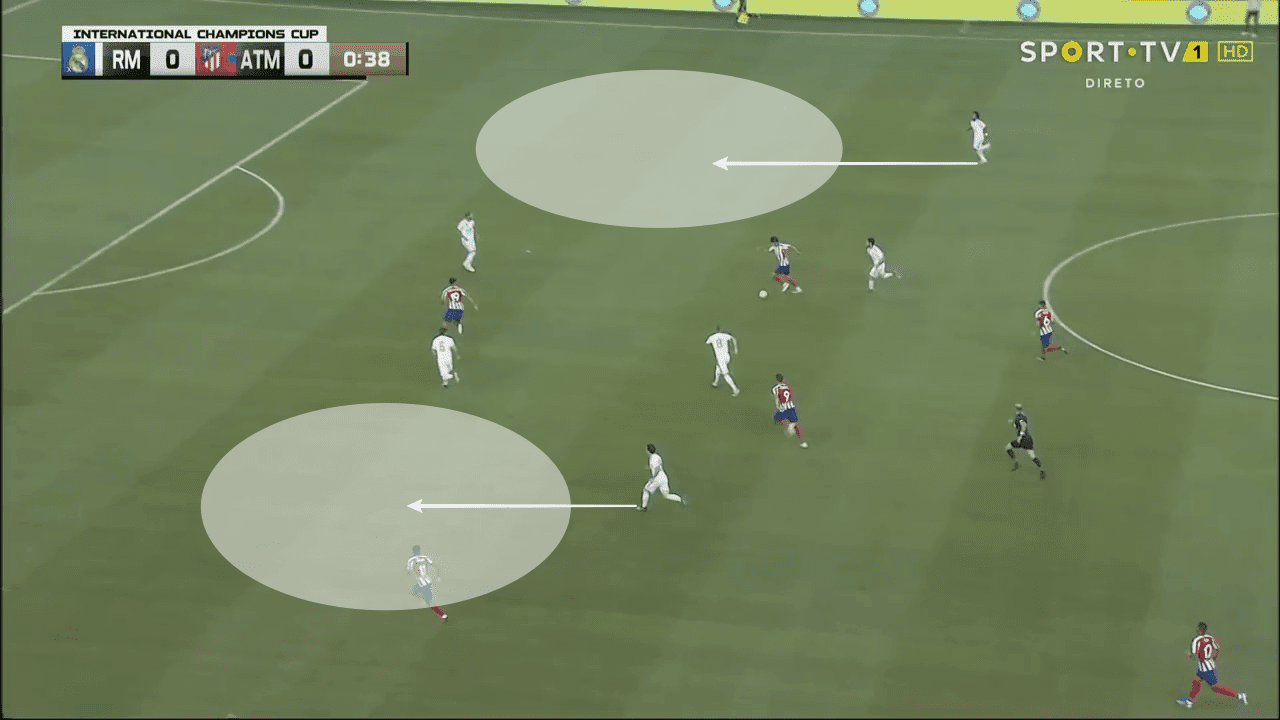
Atletico Madrid targeted this right from the off in their recent friendly clash, scoring after less than a minute by capitalising on the counter-attack after a turnover in possession. Fenerbahce too targeted Real Madrid in the same way and again opened the scoring, twice carving open the Spanish defence by making late runs into the area vacated by Odriozola.
Zidane has repeatedly criticised a lack of intensity in pre-season and this is one key area which has been affected. Without the work rate from his defender to bust a gut to get back into position, or even from their team-mates to cover for them, this situation can arise. Given the prevalence of the same issue throughout last season under three different coaches, it seems a bizarre choice for Zidane to so wholeheartedly support his first-choice full-backs despite their lacking work rates.
Midfield issues
Real Madrid’s transfer business over the summer has been clear in its desire to refresh the squad with talented young players. However, the midfield has been almost entirely neglected when it is the area which looked most in need of renovation. Marcos Llorente and Dani Ceballos have both been shipped out, almost inexplicably. With them, Real Madrid have lost the energy and dynamism which served to fuel the initial bounce under Santiago Solari.
The key element where the midfield lets down Real Madrid is in the press. To a certain extent, this is to be expected. As age hits the legs of the likes of Toni Kroos and Luka Modric, they are unable to press with the same intensity and move forward with as much pace and energy. Without support from the front-line or a new set of fresh legs, there is little to suggest that Zidane can do much about it tactically to avoid the issue.
This was evident in this example in the friendly against Arsenal. The midfield held off the press and refused to pressure the Arsenal midfield until they entered the final third. For any playmaker with mid-range passing abilities, it is a dream come true. With the midfield sitting so deep and the defence often maintaining a reasonably high line, it is easy for the striker to create space and latch onto passes between the lines.
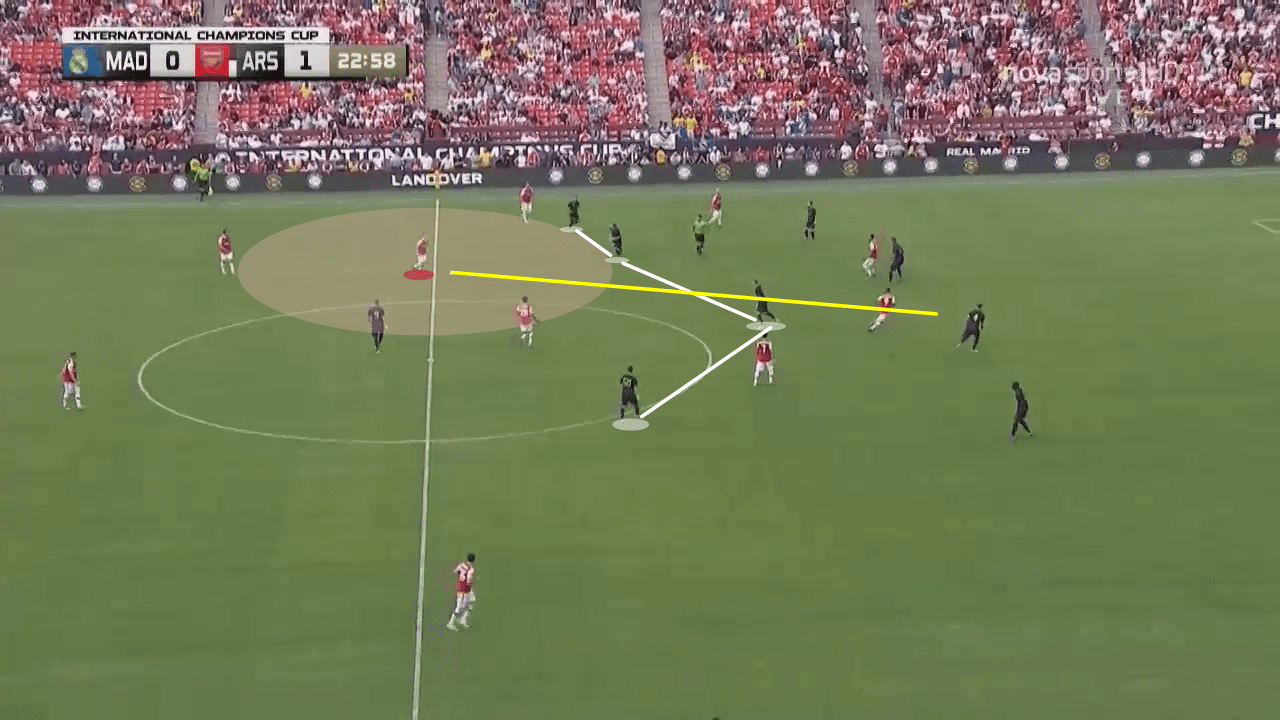
Modric’s number of interceptions has decreased in each season since 2015/16, falling from 1.9 per 90 minutes to less than half at 0.9, while the same is true for Kroos, who has fallen from 1.3 interceptions per 90 minutes to just 0.5. These figures remain fairly high in comparison to most, but once compared with the likes of Federico Valverde, who averaged 1.3 interceptions per 90 minutes, it is clear that Zidane should be demanding more such energy in his midfield, rather than moving on the likes of Llorente and Mateo Kovacic.
At the time of writing, there is also serious concern about the lack of depth. Real Madrid boast just five central midfielders, none of whom represent a natural alternative to Casemiro, compared to six players capable of playing as a right-winger. Donny van de Beek has been linked after what seems to be acceptance that Paul Pogba will not join this summer. The 22-year-old fits the profile of the kind of player which is needed, but being the only addition to potentially arrive after pre-season training began suggests he was not the first choice. Even then, without an alternative to Casemiro, the value of Zidane’s increased tactical flexibility will be truly put to the test.
Optimism in attack?
If there is a positive for Real Madrid going into 2019/20, it lies in attack. Karim Benzema continues to find fine form, particularly with his thrilling display against Fenerbahce, and Luka Jovic’s arrival has provided flexibility. In the past, the opposition have been able to predict exactly how Real Madrid would line-up in attack and the approach that they would take. With Jovic’s introduction, a much more powerful and physical style to that of Benzema, Real Madrid can mix things up.
With Zidane’s style relying heavily on crosses, the duo have the making of a solid partnership. Jovic relies more on the battering ram approach of looking to get to the near post early, whereas Benzema prefers to drift off the shoulder of the defender at the far post and float around more freely. Jovic scored four headers last season, compared to Benzema’s nine, but there are reasons to be hopeful given that Real Madrid produced the fifth-highest number of crosses in La Liga in 2018/19 with an average of 20 per match.
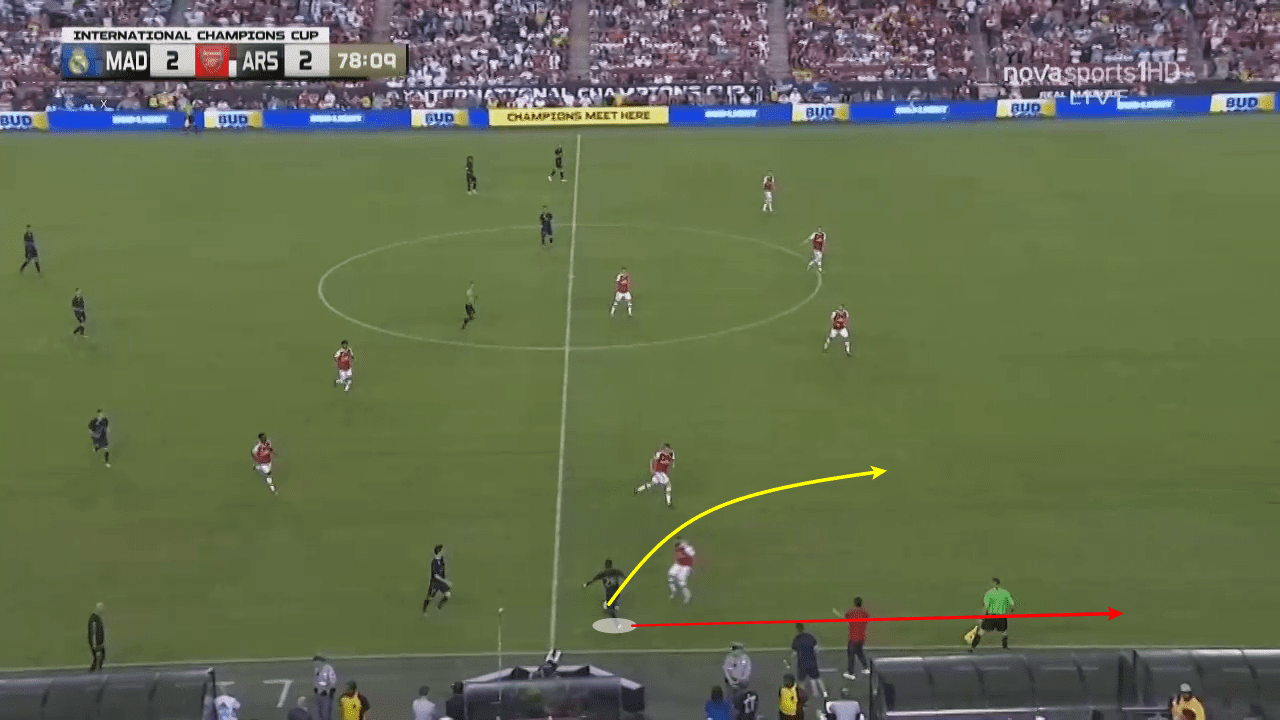
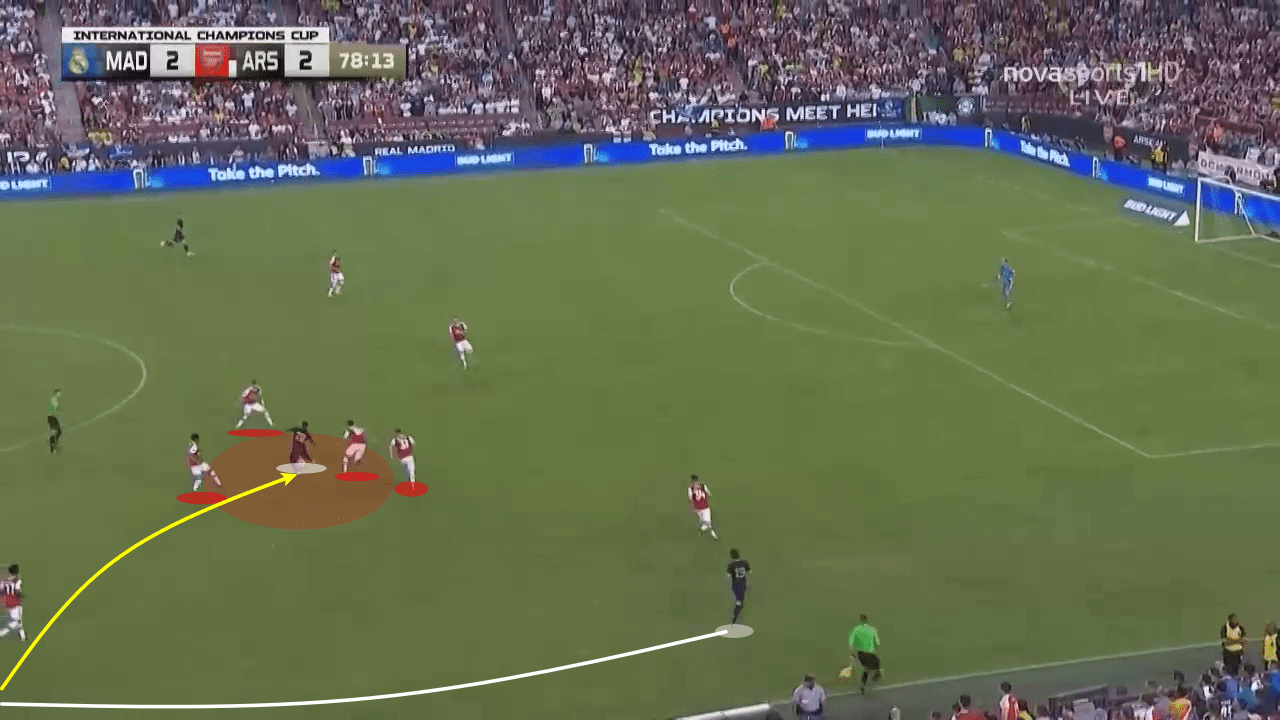
In attacking terms, things were impressive for Zidane until the injury to Marco Asensio, which is expected to rule him out for the full season, which has created a dilemma to throw a spanner into the works. Zidane has looked to deploy Vinicius Junior on the right flank, but it has not paid off as some may have hoped. Rather than remaining wide as he does on the left, the Brazilian instead cuts inside, often with great predictability or in deep positions which only see him run into dead ends.
James Rodriguez or even the exiled Gareth Bale could be alternatives who provide a more natural fit, whilst for the first time since arriving at the club, Zidane seems unconvinced by the contribution of Lucas Vazquez. Brahim Diaz, Rodrygo Goes and Takefusa Kubo also present less experienced options, though the latter two look set to miss at least the start of the campaign due to limitations on non-EU players.
Conclusion
Pre-season has gone from bad to worse from Real Madrid, though it is not to say that 2019/20 will be the worse to follow 2018/19. What looked like an impressive summer of recruitment now looks increasingly like a string of reserve options to replace the homegrown talents that were moved on early in the transfer window. The only player who looks almost certain to walk into the side is Eden Hazard, who reportedly remains significantly overweight and is yet to hit top gear in a white shirt in pre-season. Equally, players who are not in Zidane’s plans, such as Gareth Bale and James Rodriguez, remain at the club. Once again, his man-management of the squad will be crucial in getting the best out of this group of players.
A new addition in midfield could be the make or break factor. Whilst the defensive weaknesses and attacking challenges are ones that can be limited by tactical changes and work on the training field, the midfield demonstrates the area where a different type of player is required. Many of the same issues as last season have returned in pre-season, particularly in defence where Zidane’s tactical nous has been most heavily criticised. With critics already getting on his back after a disastrous pre-season campaign and the lack of a new manager bounce when he arrived last season, patience may wear thin sooner than expected should Real Madrid fail to find their feet early on this season.
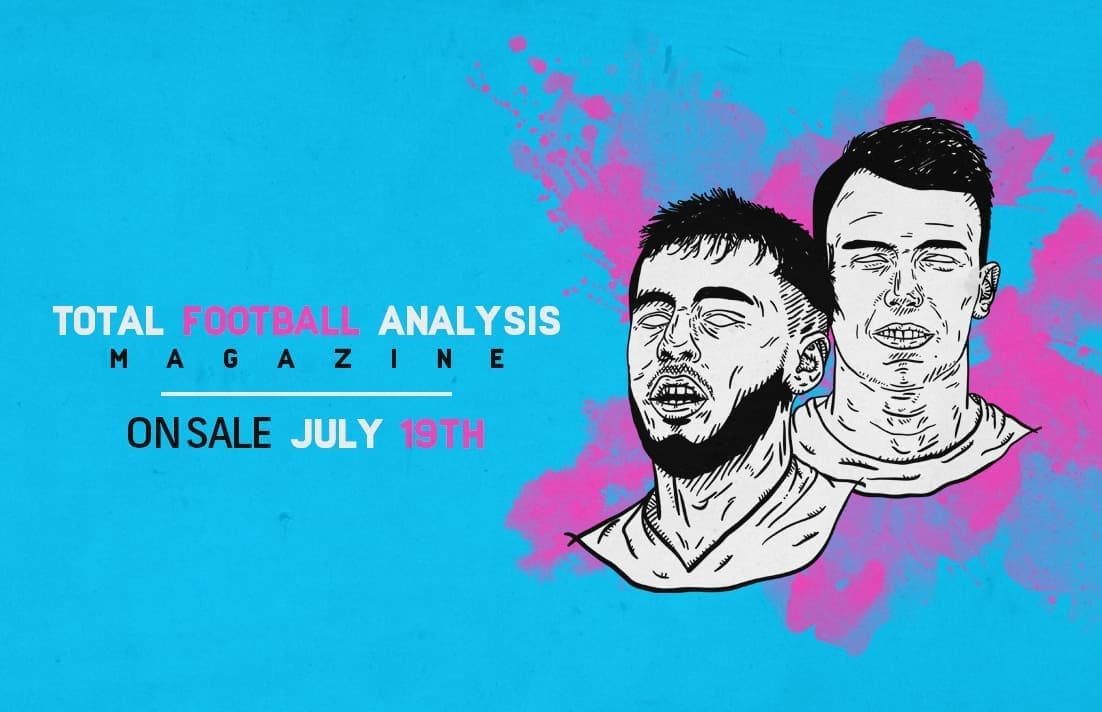
If you love tactical analysis, then you’ll love the digital magazines from totalfootballanalysis.com – a guaranteed 100+ pages of pure tactical analysis covering topics from the Premier League, Serie A, La Liga, Bundesliga and many, many more. Buy your copy of the July issue for just ₤4.99 here, or even better sign up for a ₤50 annual membership (12 monthly issues plus the annual review) right here.

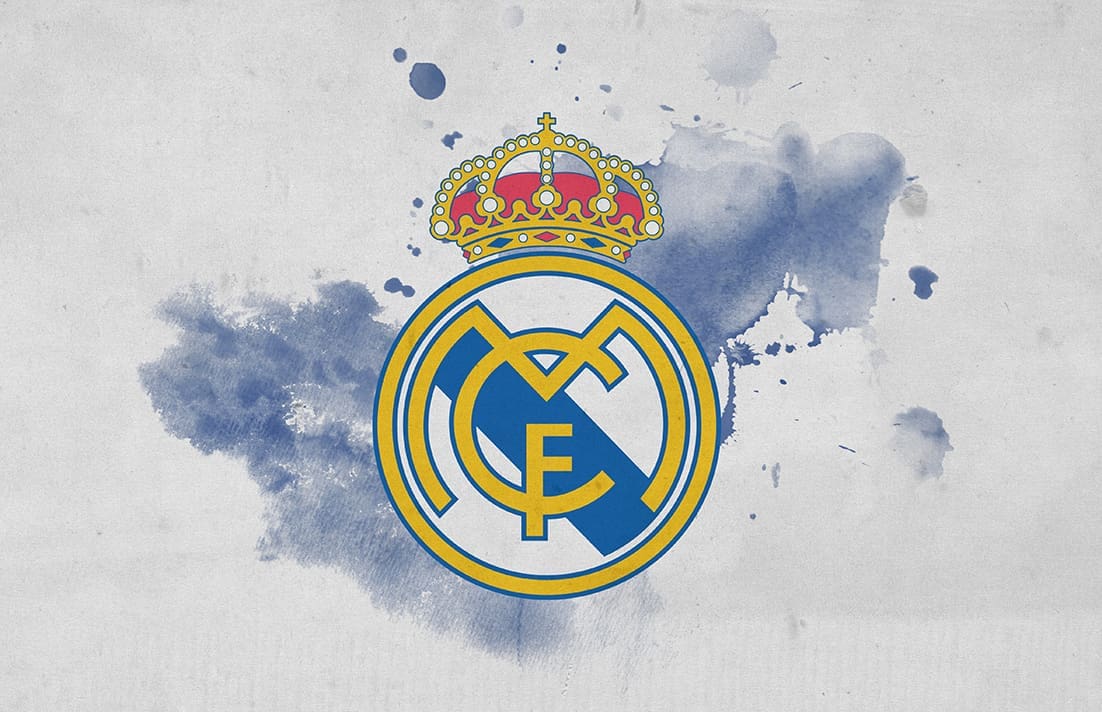



Comments